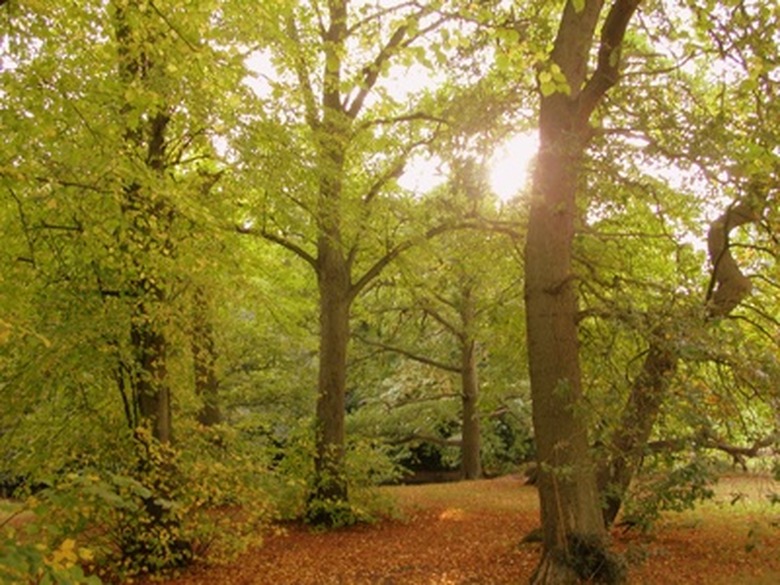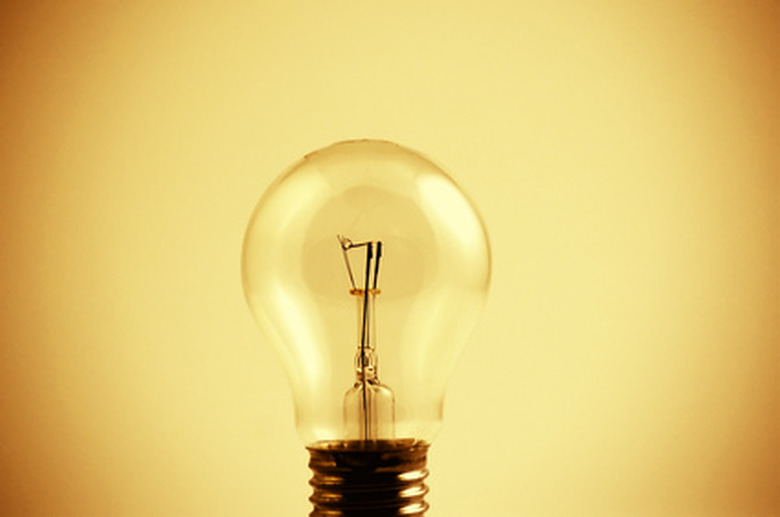Incandescent Light Vs. Sunlight For Plant Growth
You don't need a green thumb to know that your houseplants need light. However, many homeowners are not sure what kind of light to provide their plants, how to provide light or in what quantities. Poorly lit plants give disappointing results, growing spindly or failing to flower. If the choices for your houseplants are incandescent lighting or natural sunlight, sunlight will prove the better choice in most circumstances.
Light
Plants use light primarily to drive photosynthesis, the process by which plants use light energy to rearrange water and carbon dioxide molecules into sugar. Light contains colors or wavelengths, some of which affect plants differently. Sunlight appears clear because it contains all wavelengths of light, thereby meeting all plant light needs.
- You don't need a green thumb to know that your houseplants need light.
- Sunlight appears clear because it contains all wavelengths of light, thereby meeting all plant light needs.
Types
Plants use all but the green wavelengths of light to power photosynthesis. Because they reflect rather than absorb green light, plants appear green. Among the remaining wavelengths, red light controls flowering. Because different times of day produce different types of red light, plants use red light to tell time and produce flowers at the appropriate season, according to the Missouri Botanical Garden. Blue light, on the other hand, stimulates leafy growth.
Incandescent Light
Incandescent lights provide red wavelengths of light, making them an inexpensive and easily obtained light source for indoor flowering plants. However, incandescent bulbs do not provide the other wavelengths that plants need. For example, incandescent bulbs do not produce the blue wavelengths needed to develop full, healthy foliage. In comparison, fluorescent bulbs provide lots of blue light but few red rays needed to encourage flowering.
- Plants use all but the green wavelengths of light to power photosynthesis.
- For example, incandescent bulbs do not produce the blue wavelengths needed to develop full, healthy foliage.
Warning
Incandescent lights offer the additional disadvantage of generating heat in addition to light. As the University of Missouri Extension explains, once you take into account the heat produced by the bulb and locate the light far enough from the plant to eliminate the risk of heat damage, inadequate light reaches the plant. Also keep in mind that drenching a plant with red light does not necessarily guarantee flowering. Some species, such as poinsettias, flower only when exposed to short durations of red light typical of a winter day, so you'll need to plan exposure to incandescents around the individual plant's needs.
Expert Insight
If you want to use incandescent lights to light your houseplants, your goal becomes capitalizing on the good–the easy availability of red wavelengths–while minimizing the damage caused by heat and lack of access to other colors of light. The University of Missouri Extension recommends using 100 watts of fluorescent bulbs for every 30 watts of incandescent bulbs used. However, ultimately, sunlight provides for all plant light needs and in a way appropriate for all seasons. If possible, locate your houseplants in a south-facing window to make the best use of sunlight rather than relying on artificial sources.
- Incandescent lights offer the additional disadvantage of generating heat in addition to light.
- As the University of Missouri Extension explains, once you take into account the heat produced by the bulb and locate the light far enough from the plant to eliminate the risk of heat damage, inadequate light reaches the plant.

